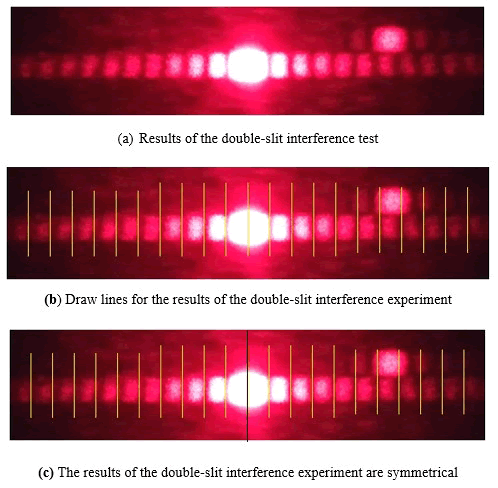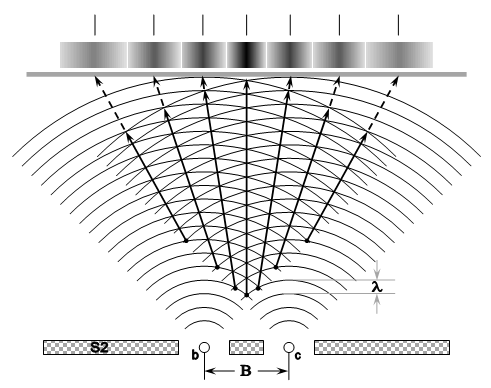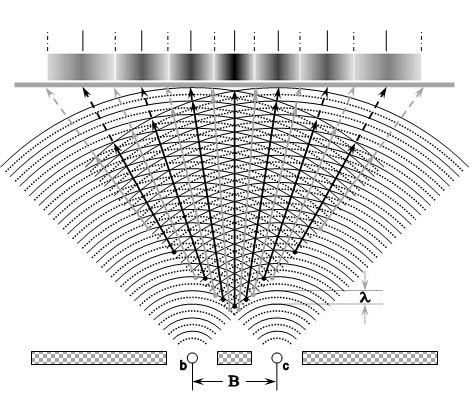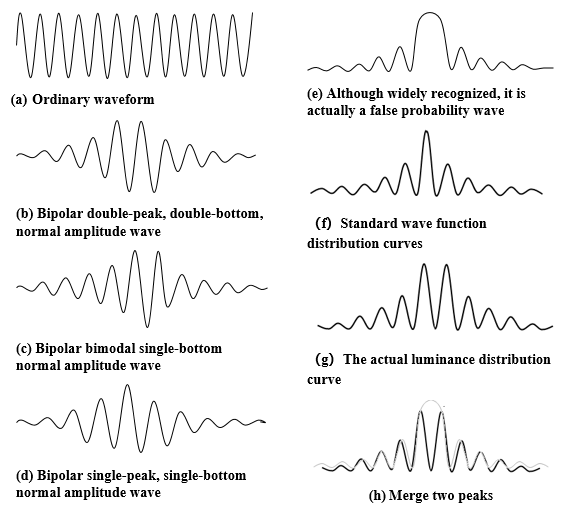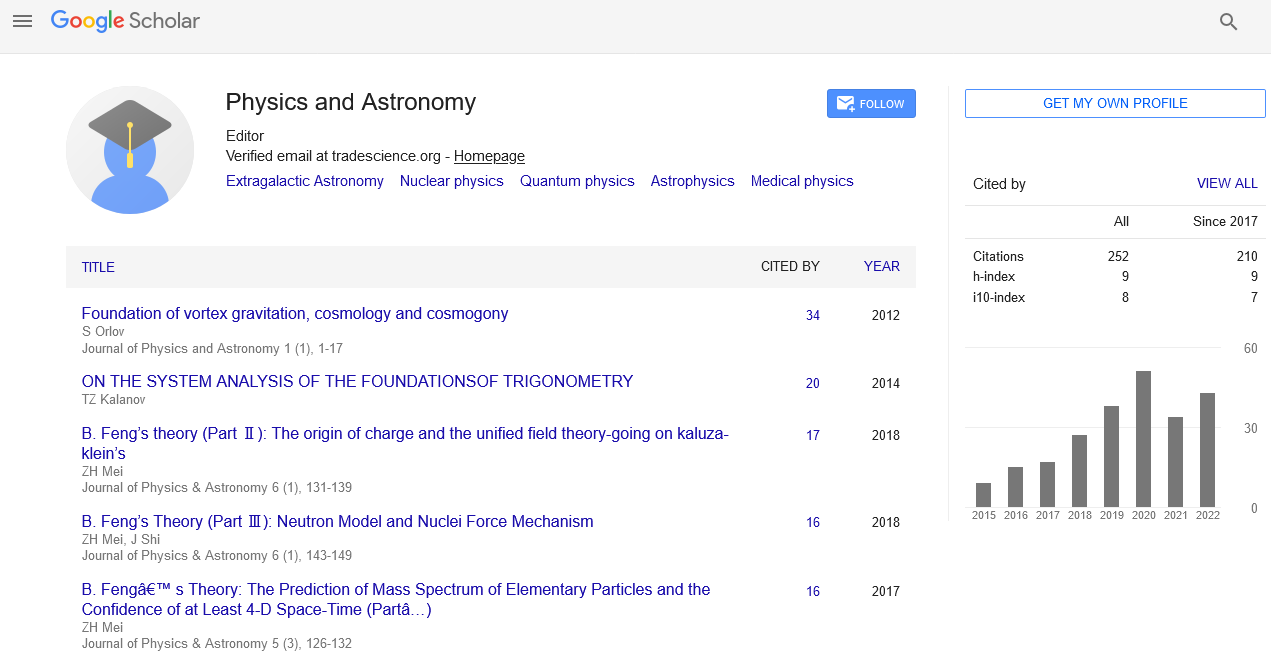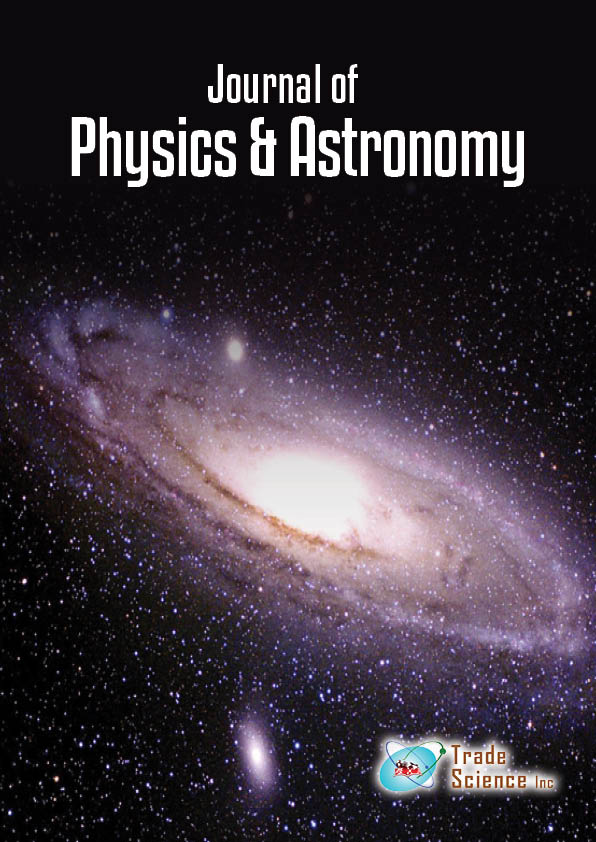Mini Review
, Volume: 13( 2)The principle of double-slit interference reverses the position of the bright and dark spots
Xia Ruhuai*
Department of Physics, Guangxi Medical University, Guangxi, China
- *Correspondence:
- Xia Ruhuai
Department of Physics, Guangxi Medical University, Guangxi, China
E-mail:chqscg@yandex.com
Received: June 20, 2024, Manuscript No. TSPA-24-139419; Editor assigned: June 24, 2024, PreQC No. TSPA-24-139419 (PQ); Reviewed: July 10, 2024, QC No. TSPA-24-139419; Revised: April 08, 2024, Manuscript No. TSPA-24-139419 (R); Published: April 15, 2024, DOI. 10.37532/2320-6756.2023.13(2).407
Abstract
It is well known that the result of the double-slit interference experiment is the fringes of light and dark. In order to make the narrative more accurate and to inherit the tradition as much as possible, the results of the double-slit interference experiment are called interference fringes; The bright patches in the interference fringes are called bright spots; The dark part between the bright spots is called the dark spot. After carefully comparing the results of the double-slit interference experiment with the well-known principle, you will be surprised to find that the light and dark spots in the interference fringes are in the wrong position, and their positions are reversed from each other. In the place where the principle of double-slit interference suggests that there should be a bright spot, the results of the double-slit interference experiment show a dark spot. Where the principle of double-slit interference suggests that dark spots should be presented, the results of the double-slit interference experiment show bright spots.
Keywords
Double-slit interference, Interference fringes, Bright spots, Dark spots
Introduction
§1 double-slit interference fringes
The results of the double-slit interference experiment are shown in Figure 1.
As shown in Figure 1(a), this is a photograph of the results of the double-slit interference experiment [1].
As shown in Figure 1(b), the results of the double-slit interference experiment are plotted. The yellow lines and characters in the diagram are artificially added to indicate and illustrate them. When you draw these yellow reticles, you find that the spacing y between the reticles is equal [2].
This is shown in Figure 1(c). If all the reticles are grouped, the center reticle is the axis of symmetry, and the reticles on both sides of it are symmetrical to each other. The centerline of the entire set of reticles falls exactly on an existing reticle and not on the midline of the space between the two reticles.
Each reticle is located in the center of the dark spot known as the "interference fringe", i.e. each reticle marks the location of a dark spot [3].
FIG. 1. Results of double-slit interference experiment.
Literature Review
§2 The classical double-slit theory of interference has only interference points that produce light spots and no interference points that produce dark spots
FIG. 2. Classic double-slit interference schematic.
As shown in Figure 2, this is a classic double-slit interference schematic. In the figure, S2 is a double-slit element, and its two slits are slit b and slit c, and the spacing between the midlines of these two slits is B. The wavelength of light waves is λ.
As shown in Figure 2, the arc in the graph represents the crest of the light wave. According to the classical principle of double-slit interference, the crests from different slits interfere with each other at their intersections, and the product of the interference is the bright spot. The crest from one slit (in general, slit B is chosen) and the trough from another slit (slit B has been chosen, only slit C can be chosen) generate a bright spot at their intersection. Since only the peaks of the waves are drawn and not the troughs, correspondingly, only the interference points that generate bright spots can be drawn in the diagram, but not the interference points that generate dark spots. In the diagram, the intersections strung together by black arrows are the interference points that generate bright spots [4].
§3 The improved double-slit interference principle has not only peaks and troughs, but also bright and dark spots in the experimental results
FIG. 3. Complete double-slit interference schematics.
Note 1: A solid black arrow strings together each of the interfering points that generate the bright spots, which are the intersection of the crests of light waves from two different slits [5].
Note 2: A solid gray arrow strings together each interference point that generate the dark spots, which are the intersection of the crests of light waves from one slit and the troughs of light waves from the other.
As shown in Figure 3, this is the improved double-slit interference schematic diagram. In the figure, the solid arcs are the wave crests, and the dotted arcs are the wave troughs. The distance between the adjacent wave crest and wave trough is half of the wavelength λ, λ/2. In the classical double-slit interference schematic diagram, because only the wave crests are drawn without the wave troughs, so only the interference points producing the bright spots can be drawn, but the interference points producing the dark spots cannot be drawn. This figure makes up for this defect [6].
§4 The stripe in the double-slit experiment must have a dark spot at its center
Both the schematic diagram of double-slit interference and the results of experiments (Fig. 1(c)) are symmetrical with the center of the fringe as a reference.
In the double-slit interference schematic shown in Figure 3, the center of the fringe must be a bright spot. The principle of doubleslit interference also states that bright spots and dark spots are alternately and periodically repeated, so that, from the center to the sides, the spots are arranged in the following order: light spot, dark spot, light spot.
As shown in Figure 1(c), a set of equally spaced reticles is drawn in the experimental results of double-slit interference. Obviously, except for the black reticle in the center, the rest of the yellow reticles are the center line of the dark spots. According to the law of the reticles presentation, the center line of the reticle coincides with the center line of the fringe of the experimental result of doubleslit interference, so the center of the fringe of the experimental result of double-slit interference can only be a dark spot.
According to the principle of double-slit interference in Figure 3:
• The closer the bright spot is to the center of the stripe, the narrower it becomes. Conversely, the bright spots are wider the farther away from the center of the stripe.
• The closer to the center of the stripe, the shorter the period of the stripe. Conversely, the farther away from the center of the stripe, the longer the period of the stripe.
However, according to the experimental results shown in Figure 1:
• The closer the bright spot is to the center of the stripe, the wider it becomes. Conversely, the farther away from the center of the stripe is, the narrower it becomes. If the central bright spot of the interference fringe of the experimental result is not a whole, but two bright spots are spliced together, although the experimental result has violated the principle of double-slit interference, the error is not very serious. However, if the central highlight of the interference fringe of the experimental result is a whole instead of two bright spots spliced together, then in terms of the width of the bright spot, the experimental result seriously violates the principle of double-slit interference, and the error is more than 100%.
• The equal spacing of the reticles indicates that the period of the stripes is stable. This means that in terms of periodicity, the principle of double-slit interference conflicts with its experimental results, but the error is not very serious. However, if the central highlight of the interference fringe of the experimental result is a whole instead of two bright spots spliced together, the experimental result deviates seriously from the principle of double-slit interference in terms of periodicity, and the error is more than 100%.
To sum up, in terms of the width of the bright spot and the period of the fringes, if the central bright spot of the interference fringes of the experimental results is not a whole but two bright spots spliced together, although the experimental results have violated the principle of double-slit interference, the error is not very serious. However, if the central highlight of the interference fringe of the experimental result is a whole instead of two bright spots spliced together, the experimental result seriously violates the principle of double-slit interference, and the error is more than 100%. Therefore, it is unacceptable that the central bright spot of the interference fringe is a whole, it must be made up of two bright spots, and its center is actually a dark spot that is masked.
Similar to the overexposure effect, the brightness of a spot overflows to its periphery, causing the faintest spot in the center to be easily overshadowed by the stronger spots on either side.
§5 Probability wave
Waves are periodic, and the wave function is certainly no exception. Excluding the bright spot in the center, the experimental results show excellent periodicity.
Based on the fringes produced by the double-slit interference experiment, quantum waves are identified as probability waves. Since it is a wave, the periodicity of the wave is predestined.
This is shown in Figure 1. With the exception of the giant highlight spot in the middle, the rest of the stripe exhibits a precise periodicity.
However, if the result is a giant bright spot at the center of the experiment rather than a combination of two bright spots with a dark spot in between, the giant bright spot is so large that it is large enough to disrupt the periodicity of the entire stripe. Observe Figure 1 and Figure 4, combined with the results of the double-slit interference experiment and the marking, if the bright spot outside the center of the fringe and its adjacent dark spot occupy a standard period, the bright spot in the center of the fringe will occupy two standard periods.
Observe Figure 4(g). This is the true luminance distribution curve of the fringes of the double-slit interference experiment.
FIG. 4. Waveform of a probability wave.
Discussion
In the double-slit interference experiment, light passing through two slits creates an interference pattern of alternating bright and dark spots on a screen. The positions of these spots are determined by the constructive (bright) and destructive (dark) interference of the light waves. Reversing the positions of the bright and dark spots could occur if the experimental setup is altered, such as by shifting the phase difference between the slits. This can be done by changing the path length or adjusting the light's wavelength, resulting in an inversion of the interference pattern.
Conclusion
Reversing the bright and dark spots in double-slit interference highlights the flexible nature of wave interference. By manipulating factors like phase or wavelength, the positions of constructive and destructive interference can be controlled, offering deeper insights into wave behavior.
References
- Mechanics Q, Hongjun Y (1999). University of Science and Technology of China Press.
- Zhao K, Luo W (2001). Quantum Physics.
- Feynman, Richard, Leighton, Rob, Sandoz, Matthew. Feynman Lecture Notes on Physics III (1) Quantum Behavior. Taiwan: Tianxia Culture Book. 2007.
- Mittelstaedt P, Prieur A, and Schieder R (1987). Unsharp particle-wave duality in a photon split-beam experiment. Found Phys. 17(9):891-903.
- Vistnes AI, Vistnes AI (2018). Interference-Diffraction. Physics of Oscillations and Waves: With use of Matlab and Python. Springer Cham, 419-473.
- Lai J (2024). Starting from the Nested Fringes of the Double-Slit Experiment. Space Sci J. 1(1):1-10.
